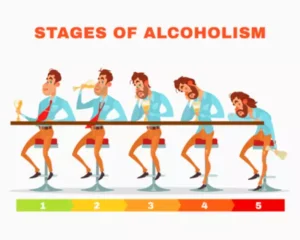
Methamphetamine has a much longer duration of action and a larger percentage of the drug remains unchanged in the body. This results in methamphetamine being present in the brain longer, which ultimately leads to prolonged stimulant effects. Amphetamines are very powerful drugs that affect your central nervous system and how your brain interacts with your body. Amphetamines can be helpful to treat conditions like ADHD or narcolepsy. Talk with your healthcare provider if you feel like you are dependent on amphetamines or if they are not working to alleviate your symptoms.

Addictive Substances
- Doctors can prescribe amphetamines to people living with ADHD, among other conditions.
- The primary pharmacology of these drugs is not only responsible for providing efficacy in disorders such as ADHD and narcolepsy, but also for their spectrum of adverse events and liability for recreational abuse, making the balance of benefit/risk the key challenge in their clinical use.
- The euphoria you experience when using meth may last only a few minutes.
- Providers may also use amphetamines to treat obesity, though this is less common.
They may be whitish with traces of gray or pink and may be a coarse powder, or in crystals or chunks. If someone you know has attempted suicide, call 911 or the local emergency number right away. DO NOT leave the person alone, even after you have called for help. Signs and symptoms of drug use or intoxication may vary, depending on the type of drug.
Help us change mental health care forever.
When taken as prescribed, amphetamines and related drugs do not cause addiction. Methylphenidate is less likely to cause addiction than other amphetamines. When amphetamines were easy to get, many people used https://ecosoberhouse.com/ them to stay awake and to have more energy. Truck drivers, students and athletes were especially likely to abuse amphetamines. Even recently, soldiers have been given amphetamines for endurance in battle.
Do amphetamines cause withdrawal symptoms?
To avoid withdrawal symptoms, take your medication exactly as your provider prescribed it to you. Schedule a time to take it every day and stick to that same schedule for the duration that you’re taking the drug. This could feel like a “rush” or a euphoric feeling that makes you happy and elevates your mood. This sensation is something that can cause addiction because people might look to feel that rush more often than they should, as prescribed by their healthcare provider. Amphetamines rank as a schedule II/IIN controlled substance (2/2N), which means that there is a high potential for the drug to cause physical dependence (addiction).

What does meth feel like?
Amphetamine users may also use other drugs inappropriately to manage the side effects of amphetamines. Benzodiazepines, for example, are anti-anxiety agents that may be used to help an individual sleep, but that can also be addictive. As with similar stimulants, methamphetamine is most often used in a “binge and crash” pattern. Because the pleasurable effects disappear even before the drug concentration in the blood falls significantly, users try to maintain the high by bingeing on the drug. In some cases, abusers indulge in a form of bingeing known as a “run,” forgoing food and sleep while continuing abuse for up to several days.

Are amphetamines a controlled substance?
- Some are common, and others are more serious, especially with misuse or use in combination with other substances like alcohol, opioids, or other stimulants.
- A person should only take medication that a doctor prescribes for them and should store their medications safely.
- The pharmacokinetic/pharmacodynamic (PK/PD) relationships of lisdexamfetamine and immediate-release (IR) d-amphetamine sulphate have been explored in rats, where automated blood sampling was combined with striatal microdialysate sampling.
- We strive to create content that is clear, concise, and easy to understand.
Also contact your provider if you are having withdrawal symptoms that concern you. If you have severe withdrawal symptoms, you may need to stay at a live-in treatment program. Addiction happens when you use amphetamines to get high amphetamine addiction or improve performance. You are not able to control your use of it and you need it to get through daily life. People who use these drugs, especially methamphetamine, have a high chance of getting HIV and hepatitis B and C.
- Examples of once-daily amphetamine medications include MES-amphetamine XR and the d-amphetamine prodrug, lisdexamfetamine.
- There is an overall paucity of high-quality data from human subjects to base conclusions on naltrexone’s efficacy.
- If you think you or a loved one are at risk of a substance use disorder, have an honest conversation with a healthcare provider.
- Thus, the appeal of a particular drug as a recreational substance of abuse is to a large extent determined by its ability to produce its desired effects within minutes, for example the cocaine ‘rush’.
- These drugs are not all in the same category, but they share some similar effects and dangers, including long-term harmful effects.
Implications of pharmacokinetics of lisdexamfetamine for efficacy, safety and recreational abuse liability
Amphetamine dependence, a type of stimulant use disorder, occurs when you need the drug to function on a daily basis. You’ll experience symptoms of withdrawal if you’re dependent and you abruptly stop using the drug. A person can recover from drug misuse or SUD and improve their relationships, professional life, sense of self, and physical and mental health. This is not the same as substance dependency — the physical symptoms of tolerance and withdrawal.
What are the long-term effects of using it?
It is generally accepted that the efficacy of the amphetamines is not different from that of methylphenidate (Faraone et al., 2006; James et al., 2001; Pelham et al., 2005), which is the other major stimulant used to treat ADHD. However, a meta-analysis by Faraone and Buitelaar (2010) did show moderately greater efficacy for amphetamine medications. This agrees with preclinical findings that methylphenidate also markedly enhances catecholaminergic drive in the PFC and striatum (see Heal et al., 2009, 2012). On the other hand, several trials have reported the superior efficacy of amphetamine in the treatment of ADHD in comparison with the non-stimulant, selective noradrenaline reuptake inhibitor, atomoxetine (Strattera®) (Biederman et al., 2006; Faraone et al., 2007; Wigal et al., 2005).
- This period also saw a surge in prescriptions of amphetamine drugs for treating attention deficit disorders.
- Everyone’s journey with recovery is different, but asking a healthcare professional, family member, or friend for help is usually the first step.
- You may continue to crave the stimulant even though you know they’re causing persistent or recurrent physical or psychological problems.
- In animal studies, methamphetamine increased viral replication; in human methamphetamine abusers, HIV caused greater neuronal injury and cognitive impairment compared with non-drug abusers.
- “The increase of dopamine, as well as the activation of the sympathetic nervous system, [can lead to] hallucinations and psychosis, similar to schizophrenia,” Franssen said.
Both compounds yielded equivalent AUC0-24h values, but compared with the equivalent dose of IR d-amphetamine, the Cmax for plasma d-amphetamine was threefold smaller for lisdexamfetamine and the tmax was threefold greater (Jasinski and Krishnan, 2009b). These differences in the PK and PD characteristics of IR d-amphetamine and lisdexamfetamine observed in humans by Jasinski and Krishnan (2009b) are very similar to the results from the rat PK/PD study that are described earlier in this review (Jackson et al., 2011; Rowley et al., 2011). As a molecule with a single chiral centre, amphetamine exists in two optically active forms, i.e. the dextro- (or d-) and levo- (or l-) isomers or enantiomers (Figure 1). Smith, Kline and French synthesised both isomers, and in 1937 commenced marketing of d-amphetamine, which was the more potent of the two isomers, under the trade name of Dexedrine®. Sales of Benzedrine and Dexedrine in chemist stores were unrestricted until 1939, when these drugs could only be obtained either on prescription from a registered medical practitioner or by signing the Poison Register (Bett, 1946). In his 1946 review, Bett commented on the widespread use of ‘energy pills’ by the allied forces in World War II, estimating that 150 million Benzedrine tablets were supplied to British and American service personnel during the course of the global conflict.

